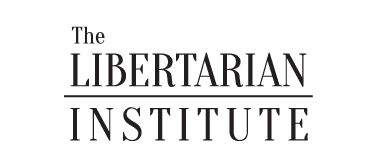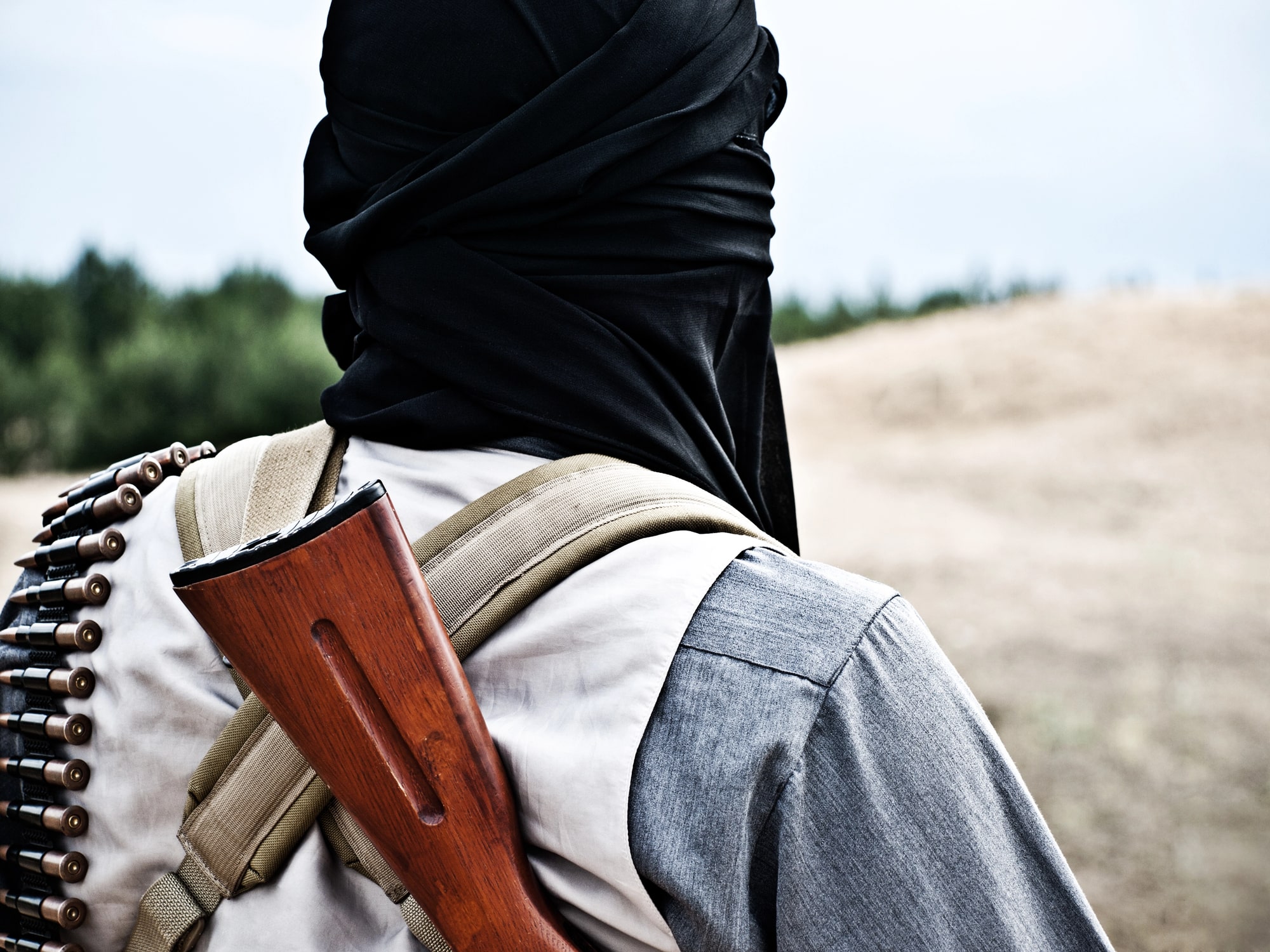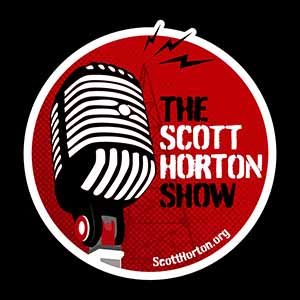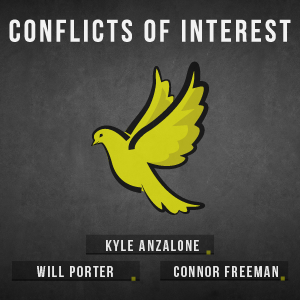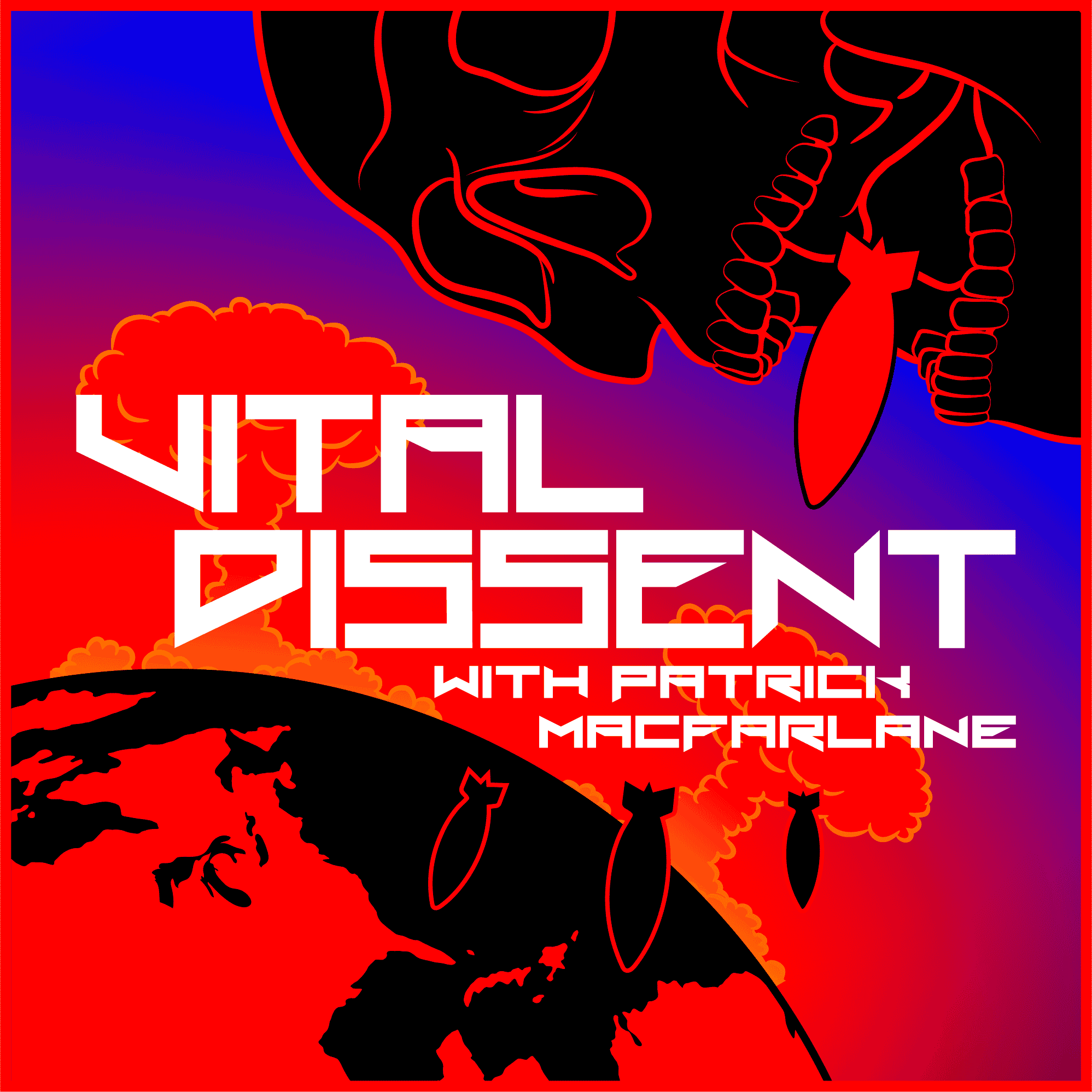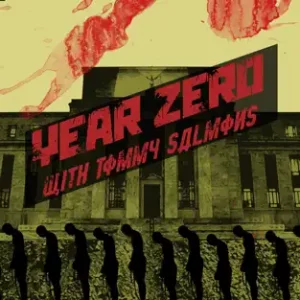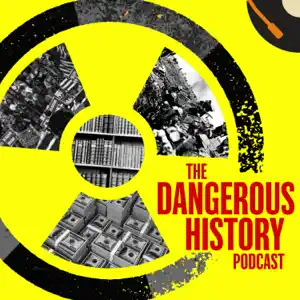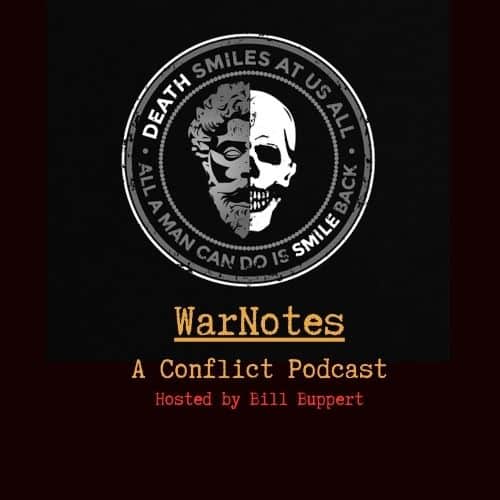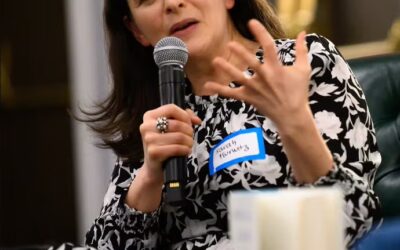As anti-government protests known as the Arab Spring swept through the Middle East in early 2011, observers felt they were witnessing spontaneous, grassroots calls for freedom against decades of tyranny and dictatorship.
While the demands of the protestors were largely sincere, the protests that erupted in Tunisia, Egypt, Yemen, Libya, and crucially, Syria, were nevertheless the product of an unconventional warfare campaign organized by the Barack Obama administration, including the National Security Council (NSC), State Department, CIA, and allied intelligence agencies.
Rooted in Obama’s Presidential Study Directive 11 (PSD-11), the unconventional warfare campaign sought to spark “democratic transitions” in U.S. allied and enemy states alike. The objective was to replace authoritarian, Arab nationalist rulers with Muslim Brotherhood dominated governments even more friendly to American and Israeli interests.
As I have detailed in my book, Creative Chaos: Inside the CIA’s covert war to topple the Syrian government, Obama’s PSD-11 is an outgrowth of the broader American and Israeli effort to topple the government of Bashar al-Assad that began after 9/11.
The unconventional warfare campaign to spark the Arab Spring involved training local activists to use social media and internet privacy technologies such as Facebook and Tor to organize protests highlighting existing grievances.
Snipers were then unleashed to carry out false flag killings of protestors that could be blamed on government security forces.
The killing of protestors created the “martyrs” needed to fuel the fire of the protests and galvanize Arab populations to call for the overthrow of their governments.
Crucially, the false flag killings gave President Obama the necessary pretext to declare that Arab leaders had “lost legitimacy” by “killing their own people” and to demand their ouster.
As Russian military analyst Yuferev Sergey observed, the sniper phenomenon first appeared in Tunisia and then “smoothly migrated” to Egypt, Yemen, Libya, and finally to Syria.
“At first, I didn’t know why people were protesting. Syria was a rich country. Life was very good,” a Christian from Syria who witnessed the early events of the so-called Arab Spring told this author. “But then the government started shooting protestors. It gave people a reason to protest even more.”
The phenomenon appeared again in 2014 in Ukraine when snipers killed more than one hundred protesters, known as the “Heavenly Hundred,” in Kiev’s Maidan square. The killings led to a U.S.-backed coup that ousted the country’s pro-Russian president.
This paper details the role of snipers in efforts to topple governments in Tunisia, Egypt, Libya, Yemen, Syria, and Ukraine.
Presidential Study Directive 11
In August 2010, U.S. President Barack Obama tasked a team of advisors led by National Security Council officials, including Samantha Power, Ben Rhodes, Michael McFaul, and Dennis Ross, to issue a report known as Presidential Study Directive 11.
The report laid the blueprint for regime change in four Arab countries, including Egypt and three others left unnamed.
According to reporting from The New York Times, Obama “pressed his advisors to study popular uprisings in Latin America, Eastern Europe, and Southeast Asia to determine which ones worked and which did not.”
The report, the result of weekly meetings involving experts from the State Department and CIA, then “identified likely flashpoints, most notably Egypt, and solicited proposals for how the administration could push for political change in countries with autocratic rulers who are also valuable allies of the United States.”
The Obama administration was particularly concerned about Egypt due to the expected succession crisis to the rule of the country’s aging and unpopular president, Hosni Mubarak. U.S. officials wanted a way to control who would take Mubarak’s place, rather than leave the outcome to chance or allow Mubarak to place his son in power after him.
The policy advocated assisting the rise to power of Islamist groups, specifically the Muslim Brotherhood.
As David Ignatius of The Washington Post reported in March 2011, after the Arab Spring was well under way, the Obama administration’s “low-key policy” involved “preparing for the prospect that Islamist governments will take hold in North Africa and the Middle East.”
Tacitly endorsing the Brotherhood, a senior Obama administration official argued, “If our policy can’t distinguish between al-Qaeda and the Muslim Brotherhood, we won’t be able to adapt to this change.”
Unconventional Warfare
While states at times engage in direct conflict against one another, they more often wage war covertly through proxies.
To avoid a direct confrontation and the possibility of a nuclear exchange during the Cold War, the United States, Soviet Union, China, France, and the United Kingdom “empowered rebel groups to act as proxies conducting irregular warfare on behalf of the patron state,” wrote Mike Fowler, Associate Professor of Military and Strategic Studies at the U.S. Air Force Academy.
“This empowerment often involved training, equipping, and funding non-state actors to overthrow or undermine governments that supported (whether real or perceived) the opposing power,” he added.
CIA support for Muslim extremists, known as the mujahideen, in Afghanistan to topple the pro-Soviet government in Kabul and to later fight occupying Soviet troops, is well documented.
Turning Members into Martyrs
After the fall of the Soviet Union, American efforts to overthrow post-Soviet states that remained within the Russian sphere of influence involved not only covert military support for “rebel” groups, but also the use of “non-violent” methods to spark anti-government protest movements known as “Color Revolutions.”
The use of non-violence to undermine pro-Russian governments was first theorized by American academic Gene Sharp and implemented by activists from the Center for Applied Non-Violent Action and Strategies (CANVAS) in Serbia.
Inherent to the non-violent strategy is the use of “political jiu-jitsu,” in which activists skillfully make government violence and repression “backfire,” writes Srdja Popovic, the executive director of CANVAS, in Foreign Policy.
Popovic emphasizes that to be successful, a movement must “be ready to capitalize on oppression.”
“Following a repressive act, it’s vital that activists keep the public aware of what has happened and take sustained measures to ensure that they don’t forget. One clever way to achieve this is to turn members of the movement who have faced particular scrutiny by a regime into martyrs,” he explained.
While opposition activists (and the intelligence agencies supporting them) can wait for an oppressive regime to create martyrs to rally around, they can also “create” them through “provocations.”
Employing snipers to carry out false flag killings during protests against an oppressive regime is an effective way to create such martyrs.
Russian analyst Yuferev Sergey stated that the use of snipers is not an effective riot control method for dispersing crowds at protests. If a sniper opens fire at a crowd, demonstrators will not hear or immediately notice the shots. Once they do, they will not know where the shots are coming from, or which way to run to escape them.
But the use of snipers at protests is an effective way to manufacture anger against an existing government or leader.
“[T]he bodies with gunshot wounds to the head or heart are sure to be found by journalists, and all this will go on TV and on the Internet,” Sergey writes. In the confusion of the events, no one will “rush to conduct ballistic examinations, to look for places from which the snipers worked. The answer is ready in advance, and all the blame immediately falls on the head of the ruling regime. This is exactly what the organizers of such provocations are trying to achieve.”
As a result, the presence of snipers has become the “hallmark of unrest” arising in many countries where the United States is seeking to topple an existing government, Sergey adds.
Snipers are used to create the “martyrs” needed by U.S.-trained and funded “non-violent” activists to rally around when calling for a government to be overthrown.
Snipers in Tunisia
The small north African nation of Tunisia was the first country to see its president toppled in the so-called Arab Spring.
The first protests in Tunisia erupted in the city of Sidi Bouzid in December 2010, four months after the Obama administration issued PSD-11.
A few weeks before, on November 28, Wikileaks released more than 250,000 leaked U.S. State Department cables, known as “Cablegate.”
Some of the cables regarded Tunisia, including one from the U.S. ambassador to the country discussing the corruption of President Zine El Abidine Ben Ali, his wife, and a broader circle of government officials.
The release of cables highlighting Ben Ali’s corruption was not part of a random, arbitrary dump of diplomatic documents later seized upon by Tunisians. It was part of a carefully prepared campaign by Wikileaks, which partnered with Tunisian exiles from the dissident website, Nawaat, to promote the cables.
Al-Jazeera reported that Wikileaks provided the cables in advance to Nawaat, whose activists read the documents, added context, translated them to French, and published them on a special website, Tunileaks, to allow Tunisian readers to understand them.
Thanks to this prior coordination, when Wikileaks was ready to release the cables, Nawaat was ready as well.
“As agreed, the first TuniLeaks went live less than an hour after WikiLeaks had published the diplomatic cables on its own site,” Al-Jazeera wrote.
According to Al-Jazeera, “Nawaat helped fertilize the cyber terrain so that when the uprising finally came, dissident networks were in place to battle the censorship regime. Nawaat amplified the protesters’ voices, sending them echoing across the internet and beyond.”
Al-Jazeera Arabic promoted the contents of the leaked cables as well by discussing them in a series of talk shows, helping to ensure Tunisians knew “their government was being run by a corrupt and nepotistic extended family.”
Tom Malinowski, a senior fellow at the McCain Institute, wrote in Foreign Policy that the cables released by Wikileaks had an important effect.
“The candid appraisal of Ben Ali by U.S. diplomats…contradicted the prevailing view among Tunisians that Washington would back Ben Ali to the bloody end, giving them added impetus to take to the streets,” Malinowski wrote.
“They further delegitimized the Tunisian leader and boosted the morale of his opponents at a pivotal moment in the drama that unfolded over the last few week,” he added.
Because the Wikileaks and Nawaat campaign to highlight corruption in Tunisia took place in the context of the PSD-11, this raises the question of whether Wikileaks participated, whether knowingly or unknowingly, in the Obama administration’s unconventional warfare campaign to topple Bin Ali.
On November 30, 2010, two days after Wikileaks released the massive trove of diplomatic cables, Zbigniew Brezinski, former national security adviser in the Jimmy Carter administration, speculated that Wikileaks was being manipulated by foreign intelligence agencies, which likely “seed” the organization’s releases with information to achieve specific objectives.
In July 2010, founder and editor Julian Assange indicated that, for security reasons, Wikileaks prefers not to know the source of leaks to the organization. “We never know the source of the leak,” he told journalists during an event at London’s Frontline Club. “Our whole system is designed such that we don’t have to keep that secret.”
In the past Wikileaks has relied on and promoted privacy software known as Tor, which allows users to browse websites, communicate, and transfer documents anonymously. Journalist Yasha Levine has documented how Tor, although touted as a privacy tool to counter U.S. government surveillance by Assange and National Security Agency (NSA) whistleblower Edward Snowden, was itself developed by the U.S. military.
Tor proved crucial in helping U.S.-trained activists topple Arab governments during the Arab Spring.
On December 17, 2010, roughly three weeks after the release of the Wikileaks cables, a young Tunisian man, Mohammad Bouazizi, lit himself on fire to protest the confiscation of his vegetable cart by a policewoman. He was taken to the hospital, where he died of his burns two weeks later, on January 4.
Anti-government protests erupted following Bouazizi’s act of self-immolation, which was widely viewed as the primary catalyst for the so-called “Tunisian Revolution” that followed.
However, the protests did not gain the momentum needed to force President Ben Ali from power until after snipers killed more than a dozen protestors in the town of Kasserine in western Tunisia between January 8 and 11.
Human Rights Watch (HRW) was able to find hospital and municipal records for seventeen victims killed during protests in Kasserine.
HRW noted the death of Mohammed Amine Mbarki, a 17-year-old son of a mechanic, as typical of the violence there. Mbarki joined an anti-government demonstration on January 8 at the main roundabout in the Zehour district, the poor neighborhood where he lived. While riot police fired tear gas at protestors from the front of a police station, Mbarki was shot by a bullet in the back of the head.
“We were shocked,” said Mbarki’s friend, Hamza Mansouri, who was with him. Mansouri told HRW that police snipers never before seen in Kasserine did the killing.
“Zehour residents quickly sanctified the roundabout with the name Martyrs Square. Young people readily exhibit videos on their mobile phone of chaos and bloody police violence. One shows a frenzied scene in a hospital emergency room, where a victim is shown with his brain blown out,” Daniel Williams of HRW wrote.
Snipers again opened fire at a funeral procession passing through Martyrs Square the next day, January 9. Witnesses told HRW that five or six people died at the roundabout that day, including at least one during the funeral.
Snipers opened fire again on January 10, before “disappearing” from the city that night. “One of the wonders of the uprising is that the more the police shot protesters, the more determined they became,” Williams of HRW concluded.
Al-Jazeera reported that according to witnesses in Kasserine, several people were shot from behind by “unidentified agents wearing different, slicker uniforms” than the regular police or army.
“From the beginning, [the army was] against shooting at people,” said Adel Baccari, a local magistrate.
The Qatari outlet added that the rifles and ammunition were not of the type used by Tunisian security forces.
Al-Jazeera noted that the killing of protestors by live sniper fire made such an impact that President Ben Ali referenced it in his speech on January 13. “Enough firing of real bullets,” Bin Ali said. “I refuse to see new victims fall.”
The speech turned out to be his last.
Tunisian doctor and activist Zied Mhirsi observed that the sniper killings were decisive in shifting public opinion against Ben Ali and pressuring him to resign and flee the country. Mhirsi says that the day after Ben Ali’s speech, January 14, saw a massive protest in the Tunisian capital that was organized through Facebook and which “everyone joined,” including the country’s middle class.
“And that day was crucial in showing that the public opinion has totally shifted and there was nobody supporting [Ben Ali] anymore. And then also that he lost control because he said no more real bullets on January 13th. And on January 14th there were still bullets in the air and snipers,” Mhirsi explained.
As a result, January 14 “was also the day he left,” ending his twenty-three years in power.
Mhirsi explained further to CBS News’ 60 Minutes program, “The turning point, the real one here was the real bullets…And then here we have the ruler, the government asking its police to shoot its own people using snipers, shooting people with real bullets in their heads.”
In addition to helping activists organize protests, Facebook played a key role in spreading awareness of the sniper killings among Tunisians.
“Facebook was the only video-sharing platform that was available to Tunisians. And seeing videos of people shot with real bullets in their heads on Facebook was shocking to many Tunisians,” Mhirsi added.
Before the “revolution,” young activists from Tunisia had joined others from Egypt, Syria, Iran and other Middle East states in attending conferences to learn how to use new technologies such as Facebook, Twitter, and Tor, for these purposes in the years preceding the Arab Spring.
The conferences were sponsored by the U.S. State Department and American tech companies, including Facebook and Google.
The same day Ben Ali was ousted, the White House issued a statement in which Barack Obama condemned the violence against protesters and welcomed Ben Ali’s exit. “I applaud the courage and dignity of the Tunisian people,” Obama claimed, while calling for “free and fair elections in the near future that reflect the true will and aspirations of the Tunisian people.”
As anticipated by Obama’s PSD-11, a new government came to power in Tunisa led by Islamists.
Ben Ali’s rule was replaced by an interim government which removed the ban on Tunisia’s Muslim Brotherhood-linked Al-Nahda party, leading to what Foreign Policy described as the party’s “meteoric rise.”
After Al-Nahda won 41% of the vote in Tunisia’s first parliamentary elections in October 2011, Noah Feldberg of Bloomberg wrote, “It’s official: The Islamists have won the Arab Spring. And the result was as inevitable as it is promising.”
After Ben Ali was toppled, Tunisians called for an investigation to prosecute the officials of the old regime presumed to be responsible for ordering snipers to kill protestors. However, Deutsche Welle (DW) reported in December 2011 that an investigative committee failed to determine the identities of the shooters.
As a result, the mother of one of the victims denounced what she considered a “cover-up” by the transitional government headed by Beji Caid Essebsi for the “killers of the martyrs.”
DW adds that security men in the Ministry of Interior were also angry after being blamed for the sniper killings by members of the Tunisian military. They organized multiple protests in Tunis demanding “the disclosure of the truth about the snipers,” who they said had also killed some security personnel. The men called for the release of their colleagues who had been arrested but not proven guilty of killing demonstrators during the protests.
Snipers in Egypt
After appearing in Tunisia, the sniper phenomenon emerged again two weeks later in Egypt amid anti-government protests seeking to oust President Hosni Mubarak.
The protests in Egypt were spearheaded by activists from the April 6 Youth Movement, which was a member of the U.S. State Department’s Alliance for Youth Movements (AYM).
The AYM was funded by the from the U.S. government-established National Endowment for Democracy (NED) and organized by Jared Cohen, a State Department official working under Secretary of State Hillary Clinton. In September 2010, Cohen left government service to become the first director of Google Ideas, later known as Jigsaw.
According to PBS Frontline, April 6 members had been coordinating directly with the State Department since at least 2008.
According to a diplomatic cable released by Wikileaks, April 6 member Ahmed Saleh visited the U.S. to take part in a State Department-organized “Alliance of Youth Movements Summit” in New York. While at the summit, he discussed techniques with fellow activists to evade government surveillance and harassment.
After the summit, Saleh held meetings with members of Congress and their staffers on Capital Hill in Washington DC. The meetings involved discussions around his ideas for regime change in Egypt before the presidential elections scheduled for 2011.
During the same period, April 6 activist Mohammed Adel traveled to Serbia to take a course on Gene Sharp’s strategies for nonviolent revolutions from activists from OTPOR, Frontline added.
In 2010, activists from the April 6 Youth Movement chose to focus their anti-government organizing campaign around the death of Khalid Said, a young Egyptian man who was brutally beaten to death by police near his home in Alexandria in June of that year.
April 6 activist and Google executive Wael Ghonim created the “We are all Khalid Said” Facebook page, which he used to help organize the first major anti-government protest, the “Day of Revolt” in Cairo’s Tahrir Square on January 25, 2011.
During the Friday “Day of Rage” protest three days later, on January 28, street battles erupted between demonstrators and riot police at Tahrir Square, with police using violent methods, including beating protesters as well as using tear gas, water cannons, rubber bullets, and lethal shotgun ammunition.
But snipers were also present at the January 28 protest. Amnesty International reports, “According to an eyewitness, a boy and his mother, who found themselves in the midst of this chaos, lifted their arms in the air to demonstrate their peaceful intention. Nonetheless, the boy was shot in the neck and fell back on his mother.”
Amnesty reported further, “According to protesters, by 7pm snipers dressed in black or grey standing on top of buildings, including the Prime Minister’s Cabinet office, were among those firing at peaceful demonstrators. According to eyewitnesses, five or six people were shot on Qasr El Einy Street and many more were injured.”
Kamel Anwar, a fifty-six year old doctor with two children, was shot from behind on Qasr El Einy Street. He said snipers opened fire from the Taawun Petrol Station. He saw a teenage boy falling to the ground and remain motionless before he himself was shot.
Snipers appeared again the following day, January 29, as street battles between protestors and security forces escalated near the Ministry of Interior.
“Snipers in the residential buildings on the street also fired at them, shooting a journalist with a camera in the chest, according to an eyewitness…12 are believed to have been killed,” Amnesty reported.
Evidence later presented in Cairo’s Criminal Court confirmed that snipers were deployed at the height of the eighteen-day revolution.
Al-Ahram newspaper reported, “Evidence included video footage showing men standing atop the ministry building in Cairo’s Lazoughli district on 29 January firing on protesters using live ammunition.”
“Footage also showed an unarmed protester bleeding to death from a head wound. According to medical reports also presented as evidence, the protester died after sustaining two bullet wounds to the head,” Al-Ahram added.
Just three days later, on February 1, President Barack Obama seized on the killings to call for Mubarak to step down. Obama publicly stated that the transition to a new government “must begin now.”
Earlier in the day, Obama had sent a message to Mubarak through Frank Wisner, a former U.S. ambassador to Egypt, telling him to “step down immediately,” Politico reported. Mubarak agreed to give up power ten days later, on February 11.
The deaths of dozens of protestors killed by snipers on January 29 had given Obama the justification to demand a foreign leader and U.S. ally be removed.
While the perception persisted that the Obama administration had sought to keep their old ally in power as long as possible, Politico later reported that a group of White House aides, including Ben Rhodes and Denis McDonough, “gathered for an impromptu party” after Mubarak stepped down. “It was a euphoric night for us, no doubt,” said Michael McFaul, Obama’s top Russia aide and a participant in the PSD-11 strategy meetings.
A year later, in January 2012, the Muslim Brotherhood’s Freedom and Justice Party (FJP) won the largest number of seats in Egypt’s first democratic elections. In June 2012, Muslim Brotherhood candidate Mohammed Morsi was elected president of Egypt.
In March 2013, Morsi’s government commissioned a report claiming that Mubarak’s security forces were responsible for killing eight hundred protesters during the revolution.
“According to the leaked report, police were responsible for most of the deaths—many at the hands of police snipers shooting from the roofs surrounding Tahrir Square,” The Guardian reported.
In 2014, after Morsi had been deposed in a coup by Egyptian general Abdul Fattah Al-Sisi, Judge Mahmoud Al-Rashidy acquitted Mubarak’s former Interior Minister Habib al-Adly and six of his aides on charges of inciting and conspiring in the killing of protesters during the January 25 revolution.
Mada Masr reported that Judge Rashidy said he knew the verdict would “shock many” and therefore released the 280-page judgment to make the evidence of his conclusions public. “The testimonies admitted to the use of live ammunition only around police stations or other strategic buildings [between January 28 and 31], which the judge argues is self-defense and also outside the scope of the case, which specifies the killing of protesters in public squares,” Mada Masr wrote.
Rashidy argued that the Muslim Brotherhood was behind the violence. “It became evidently certain for the court that the group that targeted those security spots occupied by officers and employees went there with a conceived plan by an organized group that hides behind religion to tamper with the security and stability of the country,” the judge stated.
Rashidy’s investigation explains how protestors were confirmed killed by government forces in some places, but not others. This suggests that the Egyptian police may have been responsible for killing protesters with live ammunition to protect ministry buildings, while snipers from unknown parties were killing protestors who died elsewhere, such as at Tahrir Square and on Qasr El Einy Street.
Snipers in Libya
Just one week after Mubarak fell, the sniper phenomenon again appeared, this time in Libya, when protestors took to the streets for another “Day of Rage.”
On February 17, the Human Rights Solidarity campaign group told The Telegraph that snipers on rooftops in the city of Al-Baida had opened fire, killing thirteen protesters and wounding dozens more.
Human Rights Watch (HRW) reported that according to protestors, sixteen attending the demonstrations were killed by gunshot in Al-Baida, while another seventeen were shot and killed in Benghazi, mostly near Abdel Nasser Street.
As in Tunisia and Egypt, it was immediately assumed by western journalists and human rights activists that government security forces were responsible for the killings. “It is remarkable that Gaddafi is still copying the very same tactics that failed Hosni Mubarak so completely just across the border,” said Sarah Leah Whitson, Middle East and North Africa director at HRW, in response to the sniper fire.
On February 18, Salon reported that in Benghazi, snipers killed at least fifteen mourners leaving a funeral for demonstrators killed the day before. “Snipers fired on thousands of people gathered in Benghazi, a focal point of the unrest, to mourn 35 protesters who were shot on Friday,” a hospital official said.
Two weeks later, President Obama again seized on the killing of protestors and repeated the same demand he had made to Mubarak. “Colonel Qaddafi needs to step down from power,” the president said in a press conference at the White House on March 3. “You’ve seen with great clarity that he has lost legitimacy with his people.”
The United Nations passed a resolution for a no-fly zone over Libya two weeks later. Member states voting for the resolution claimed that Qaddafi was “on the verge of even greater violence against civilians,” and “stressed that the objective was solely to protect civilians from further harm.”
NATO then used the UN resolution authorizing a no-fly zone over Benghazi to launch a bombing campaign in support of Al-Qaeda-linked militants on the ground who were seeking to topple Qaddafi.
Members of the February 17 Martyrs Brigade, which was formed by Muslim Brotherhood members, captured the capital Tripoli on August 23. The brigade was led by Abdul Hakim Belhadj, former commander of the Al-Qaeda-linked Libyan Islamic Fighting Group (LIFG).
Unlike Bin Ali and Mubarak, Qaddafi had refused to step down. When he attempted to escape the city of Sirte before it was overrun on October 20, French warplanes bombed his convoy, killing up to ninety-five, including many who burned alive. Qaddafi survived but NATO-backed “rebels” quickly found him hiding in a pipe. He was either murdered on the spot or died while being transported in an ambulance.
The door was now open for the Muslim Brotherhood and other Islamist groups to seek power in a future government, as envisioned by PSD-11.
After Qaddafi’s fall, the country was temporarily governed by the National Transitional Council (NTC), which had been established on February 27, 2011 to act the “political face of the revolution.”
Elections were planned for June of the following year to establish a General National Congress, which would write a constitution and establish a permanent government. In November, the Muslim Brotherhood in Libya held a public conference in Benghazi to restructure its organization, elect a new leader, and form a political party, the Justice and Construction Party (JCP).
The LIFG formed the Libyan Islamic Movement for Change (LIMC), whose members split into two political parties.
U.S. State Department documents obtained under the Freedom of Information Act (FOIA) revealed details of the Obama administration’s support for the Muslim Brotherhood in Libya.
The documents showed that in April 2012, U.S. officials arranged for the Brotherhood’s public relations director, Mohammad Gaair, to visit Washington and speak at a conference hosted by the Carnegie Endowment for International Peace. The conference was entitled, “Islamists in Power.”
An undated State Department cable noted that the ambassadors of the United States, United Kingdom, France, and Italy visited Mohammad Sawan, Chairman of the Brotherhood’s JCP party at his office in Tripoli.
The State Department cable noted, ‘‘On their part, the Ambassadors praised the active role of the [JCP] Party in the political scene and confirmed their standing with the Libyan people and Government despite its weaknesses and they are keen to stabilize the region.”
Ahead of the parliamentary elections in July 2012, The New York Times reported that leading Islamists in Libya had predicted that their parties would win as much as 60% of the seats in the congress. However, the “Islamist wave” that swept through Egypt and Tunisia was broken, the Times noted, when a coalition led by Mustafa Abd al-Jalil, the chairman of the NTC, won the most votes.
Jalil’s success in defeating the Brotherhood owed in part to his own promise to make Islamic law a main source of legislation for the new constitution and through the backing of his tribe, the Warfalla, one of the largest in the country.
Snipers in Yemen
After Libya, the sniper phenomenon soon appeared in Yemen as well, where Arab Spring demonstrations erupted to challenge the rule of President Ali Abdullah Saleh, who had ruled the country for over three decades.
On Friday, March 18, 2011, tens of thousands of protestors gathered in the Yemeni capital of Sana at a large traffic circled dubbed “Taghyir Square” or “Change Square.” The Associated Press (AP) reported, “As snipers hidden on rooftops fired methodically on Yemeni protesters Friday, police sealed off a key escape route with a wall of burning tires, turning the largest of a month of anti-government demonstrations into a killing field in which at least 46 people perished.”
“Many of the victims, who included children, were shot in the head and neck, their bodies left sprawled on the ground or carried off by other protesters desperately pressing scarves to wounds to try to stop the bleeding,” the AP added.
The AP then quoted Mohammad al-Sabri, an opposition spokesman, who immediately attributed the killings directly to President Saleh. “It is a massacre. This is part of a criminal plan to kill off the protesters, and the president and his relatives are responsible for the bloodshed in Yemen today,” Sabri said.
President Obama followed by saying, “Those responsible for today’s violence must be held accountable.”
However, like Ben Ali and Mubarak, President Saleh denied at a press conference that government forces were involved, claiming that the gunmen may have been from among the demonstrators themselves.
The New York Times noted that the sniper massacre would harm the Yemeni president, who had just begun Saudi-brokered negotiations to share power with Yemen’s opposition coalition, which was” dominated” by the Muslim Brotherhood-linked Islah Party.
“It’s not in Saleh’s interest at all to have people get shot,” the Times quoted Charles Schmitz, a Yemen expert at Towson University, as saying. “That fact deepened the mystery over the shootings,” the paper concluded.
The advantage gained by the opposition from the massacre was confirmed by a protestor, Abdul-Ghani Soliman. “I actually expect more than this, because freedom requires martyrs,” said Mr. Soliman. “This will continue, and it will grow.”
In the wake of the massacre, American and Yemeni officials stated that the Obama administration “quietly has shifted positions,” concluding that Saleh “must be eased out of office,” despite his role as a U.S. partner in the so-called Global War on Terror.
“The Obama administration has determined that President Ali Abdullah Saleh, who had his supporters fire on peaceful demonstrators, is unlikely to bring about required reforms,” the Columbus Dispatch wrote, even though “Saleh has been considered a critical ally in fighting the Yemeni branch of al-Qaida.”
The Dispatch wrote further that negotiations for Saleh to hand over power to a provisional government “began after government-linked gunmen killed more than 50 protesters at a rally on March 18, prompting a wave of defections of high-level government officials the following week.”
Notably, the Obama administration was now pushing Saleh to share power with the Muslim Brotherhood-linked Islah Party, which had a relationship with Al-Qaeda.
The Brookings Institution observed that as a result of the transition to a new, post-Saleh government, “Islah enjoyed new opportunities for institutional power,” and “initially seemed ascendant” until it experienced difficulties due to opposition from the Shia Zayid party, Ansar Allah (also known as the Houthis).
The New York Times later noted that Islah was led by Abdul Majid al-Zindani, a onetime mentor to Osama bin Laden who was named a “specially designated global terrorist” by the U.S. Treasury Department in 2004. During protests at Change Square in Sana in March, Zindani gave a speech in which he declared, “An Islamic state is coming!” the Times noted.
Brookings highlighted the relationship as well, writing that Islah’s “murky relationship” with extremist organizations like Al-Qaida in the Arabian Peninsula (AQAP) and the Islamic State (ISIS) also “proved an obstacle to maintain power.”
Snipers in Syria
Arab Spring protests in Syria began in March 2011 after Deraa residents were angered by the detention and alleged torture of several young teenage boys who had written slogans against President Bashar al-Assad on the wall of a school.
Syrian activists and the Arab media promoted exaggerated accounts of the teenage boys’ mistreatment to help spark protests.
“The ‘Daraa children,’ as they were dubbed in the media, weren’t children, and many had nothing to do with the writing on the walls, but tales of their harsh treatment in custody (real and embellished) sparked protests for their release, demonstrations that ignited the Syrian revolution in mid-March and christened Daraa as its birthplace,” Time journalist Rania Abouzeid, who reported from within Syria for several years during the war, noted.
On March 18, the same day snipers killed forty-six in Yemen, protestors gathered at the Al-Omari Mosque in the southern Syrian town of Deraa, for the first large anti-government demonstration in Syria. Four protestors were killed in murky circumstances that evening.
In his book, The Past Decade in Syria: The Dialectic of Stagnation and Reform, Muhammad Jamal Barout reports that according to Abd al-Hamid Tafiq, the Al-Jazeera Damascus bureau chief, “a group of masked militants riding motorcycles opened fire on the demonstrators, killing four people between the hours of six and eight in the evening, including Ahmad al-Jawabra, who was considered the first martyr.”
And who were the masked militants riding motorcycles? Barout takes for granted that they were from the government side. But it is unclear why the government would resort to using masked men on motorbikes in Deraa to suppress protests.
One possibility is that the masked men on motorcycles were “saboteurs” or “infiltrators” from a third party seeking to create martyrs needed to stoke anger, and further protest, against the government.
Five days later, on March 23, Reuters reported the presence of snipers amid the killing of ten more protesters in Deraa, including at a mosque and at the edge of the city during a protest march. “Snipers wearing black masks were seen on rooftops,” Reuters wrote, assuming they were from the government side.
“You didn’t know where the bullets were coming from. No one could carry away any of the fallen, one Deraa resident said.
“Bodies fell in the streets. We do not know how many died,” another witness told the news agency.
Snipers later appeared in the town of Douma in the eastern Ghouta area of the Damascus countryside. The killing of protesters in Douma, coupled with the strong Salafist beliefs of many of its residents, made the town a center of the protest movement in the country.
In his book, Syria: A Way of Suffering to Freedom, Al-Jazeera analyst Azmi Bishara observes that Douma residents organized a small anti-government protest of about one thousand people on Friday, March 25 to show solidarity with demonstrators in Deraa.
AFP reports that six civilians were shot and killed a week later, on April 1, when about three thousand protestors gathered at the Great Mosque in Douma for another protest. Of these events, Bishara writes that, “snipers on the buildings overlooking the square fired live bullets at the protesters, resulting in six martyrs.”
Bishara observed further that, “This was the first time that live bullets were used to suppress protesters in the Damascus countryside” and that it “immediately turned into a catalyst” that pushed the residents “to rise up against the regime” and participate further in demonstrations.
A funeral (and de facto protest) for the martyrs was held two days later, on April 3. This time, huge crowds turned out, which Bishara attributes to the work of the snipers, assuming them to come from the government side.
“The scene of the funeral of the martyrs of Douma on April 3, 2011, in which about 60,000 citizens participated, illustrates the adverse effect of the precise solution that the regime followed in confronting the uprising,” Bishara wrote.
In contrast, Syrian state media insisted that an unknown armed group opened fire on the protestors in Douma, killing both civilians and security personnel. However, the killings had a strong effect on how Syrians perceived the chaotic events, turning many against the government.
Yusuf, a Christian from the neighboring town of Irbeen in eastern Ghouta, told this author, “The snipers helped light the fire of the Syrian revolution. After many protestors were killed, the demonstrations got bigger, and more people were against the government.”
Protests spread to many more cities and towns the following week, as did the killings.
On April 8, dubbed the “Friday of Steadfastness,” large demonstrations took place in Deraa and several surrounding villages.
In Deraa, twenty-seven people were killed, Al-Jazeera reported, citing medical sources and witnesses. One witness claimed the security forces opened fire with rubber-coated bullets and live rounds to disperse stone-throwing protesters.
In contrast, state-run SANA news agency reported that nineteen members of the security forces were killed and seventy-five people wounded by “armed groups” in Daraa using live ammunition.
Syrian sociologist Mohammad Jamal Barout stated that demonstrators blamed government affiliated gangs (shabiha) for the killings, while the government blamed “infiltrators.”
Many on the government side began to accept the opposition narrative of government responsibility.
The Deraa representative in the People’s Assembly, Syria’s parliament, held the security services responsible for the killings, while the editor-in-chief of the official Tishreen newspaper was dismissed from her position after questioning the government denial that the snipers came from among its security forces, Barout explained.
During the April 8 demonstration in Deraa, some protestors gathered in front of the Palace of Justice. Most were from the Al-Musalma, Al-Radi, and Aba Zaid families. They were the same families of the protestors killed on March 18 by the masked “motorcycle riders,” Barout noted.
By this time, not only peaceful protestors were being killed, but also armed opposition militants and army soldiers engaged in gunbattles with one another. However, to obscure the nature of the violence and blame it on the government, opposition activists began claiming that dead opposition militants were actually civilian protestors, and that government soldiers were not being killed by the opposition militants, but by fellow soldiers for refusing to fire on protestors and trying to defect.
In one notable case, snipers killed nine soldiers traveling in a bus on the coastal highway near Banias on April 9, the day after the Deraa protests. Opposition activists attempted to blame the army for killing its own soldiers, allegedly for refusing to fire on protestors. But one soldier who survived the attack said he was not shot at by fellow soldiers. He stated that he did not have orders to fire on peaceful protestors, but only at anyone shooting at him first.
By this time, some prominent opposition activists began to acknowledge “infiltrators” may have behind the killing of some protestors, journalist Alix Van Buren of Italy’s la Repubblica newspaper reported on April 12.
When Van Buren asked eighty-year-old lawyer Haythem al-Maleh, the “father of civil rights” in Syria, about the possibility of “infiltrators,” Maleh spoke of “those who want to poison the relationship between the people and the regime: those who shoot at demonstrators and soldiers, to spread terror.”
On Monday, April 18, opposition activists took the decision to march to the square of the new clock tower in the center of Homs, Syria’s third largest city, and to establish a sit-in there resembling that established in Egypt’s Tahrir Square previously. The sit-in would set the stage for another alleged massacre that was used to suggest that the Syrian government was using appalling levels of violence to suppress peaceful dissent.
Human Rights Watch (HRW) released testimony from an alleged defected intelligence officer who claimed that dozens and dozens of people were killed and wounded at the sit-in in over thirty minutes of shooting by Air Force security, the army, and Alawite gangs.
Shortly after the massacre, “earth diggers and fire trucks arrived. The diggers lifted the bodies and put them in a truck. I don’t know where they took them. The wounded ended up at the military hospital in Homs,” the alleged defector told HRW.
Al-Jazeera similarly reported claims by activists of a “real massacre,” and that “shooting was being carried out directly on the demonstrators.”
Time journalist Rania Abouzeid reported that the alleged clock tower massacre “was a turning point in the struggle for Homs, although years later some of the men present that night would admit that claims of a massacre were exaggerated, even fabricated, by rebel activists to garner sympathy.” But news of the fabricated massacre made an impact on Syrians who believed it to be true.
Ahmed, a man from Homs who owned a shop near the clock tower during the period of the early protests, told this author that when the protests began in 2011, Assad was “beloved.”
However, after seeing that so many protestors had been killed, he became an opponent of the government and joined a Free Syrian Army (FSA) group in Homs. After fighting against the government for two years, he fled to opposition-controlled territory in Idlib to resume his life as a shop owner.
The chaos and killings continued in the weeks after the alleged massacre in Homs. Syrian security forces allegedly killed 103 people across the country during “Great Friday” demonstrations four days later, on April 22. Syrian activists speaking to Al-Jazeera called it the “bloodiest day” of the revolution so far.
In response to the killings, President Obama issued a strong statement, saying the “outrageous use of violence to quell protests must come to an end now.” On May 19, Obama demanded further that Assad either lead the transition to democracy “or get out of the way.”
Snipers soon also appeared in Hama, Syria’s fourth largest city and the site of traditional Muslim Brotherhood opposition to the Assad government, dating back to the events of 1982. On June 4, opposition activists claimed snipers opened fire on protesters gathered in Hama’s old quarter and the nearby Assi Square, killing at least fifty-three.
“The firing began from rooftops on the demonstrators. I saw scores of people falling in Assi square and the streets and alleyways branching out. Blood was everywhere,” one witness told Reuters. “It looked to me as if hundreds of people have been injured but I was in a panic and wanted to find cover. Funerals for the martyrs have already started,” he added.
Finally, on August 18, 2011, President Obama publicly called for Assad to “step aside” while imposing sanctions on the Syrian government, The Washington Post reported.
In a nod to the Muslim Brotherhood, the Post noted that in Syria, the “Sunni majority, however, has an Islamist strain long repressed by the Assads that could demand a larger role in the next government.”
In December 2011, Secretary of State Hillary Clinton declared that the United States viewed the Syrian National Council (SNC) as a “leading and legitimate representative of Syrians seeking a peaceful transition,” after meeting with leaders of the group residing outside Syria.
Reuters later noted that although the public face of the SNC was the secular, Paris-based professor Bourhan Ghalioun, the organization was in fact controlled by the Muslim Brotherhood. “[T]here is little dispute about who calls the shots,” the news agency stated.
As in Tunisia, Egypt, Libya, and Yemen, the bodies of the dead protestors in Syria were paraded on TV and the internet, but no one rushed to conduct a ballistic analysis of who was shooting them.
Instead, the answer was “ready in advance,” and all the blame immediately fell “on the head of the ruling regime,” as the Russian analyst Yuferev Sergey predicted.
However, as journalist Kit Klarenberg observed, “If peaceful protesters were killed in the initial stages of the Syrian ‘revolution,’ the question of who was responsible remains unanswered today.”
Evidence that the Syrian government did not order the killing of protestors in this early period is found in the minutes of the meetings of the Syrian government’s Central Crisis Management Cell, which was organized by Assad to manage the response to the protests.
The Crisis Cell minutes were revealed in the “Assad files,” a massive cache of documents smuggled out of Syria. The documents were preserved by a European funded NGO, the Commission for International Justice and Accountability (CIJA), for the purpose of gathering evidence of the involvement of top government officials in war crimes.
Contrary to what was claimed, the documents do not show that senior Syrian security officials issued orders to shoot protestors. Instead, they contain numerous orders instructing the security forces to avoid shooting civilians, and to only use live fire in cases of self-defense, as the soldier in Banias claimed.
Klarenberg writes that in the days leading up to the mid-March protests, Crisis Cell officials issued explicit instructions to security forces that citizens “should not be provoked.”
Another order from the Crisis Cell states, “In order to avoid the consequences of continued incitement…and foil the attempts of inciters to exploit any pretext, civil police and security agents are requested not to provoke citizens.”
Klarenberg notes further that on April 18, the Crisis Cell ordered the military to only “counter with weapons those who carry weapons against the state, while ensuring that civilians are not harmed.”
In his discussion of the Crisis Cell documents, analyst Adam Larson notes that an order from April 23 states security forces should be “Focusing on arresting inciters, especially those shooting at demonstrators (snipers or infiltrators).”
Because these are internal communications that were never expected to be made public, the Syrian leadership would not have hesitated to discuss orders for snipers to shoot peaceful protestors to suppress the demonstrations, if that had been their strategy.
But they recommended the opposite, perhaps as result of seeing what had already happened in Tunisia, Egypt, Libya, and Yemen.
To supplement the protests, the CIA launched an Al-Qaeda-led insurgency to topple Assad’s government, as detailed in this author’s book, Creative Chaos. War engulfed Syria over the next fourteen years, killing hundreds of thousands and displacing millions.
Known as Operation Timber Sycamore, the CIA effort was finally successful in December 2024 when former Al-Qaeda and Islamic State in Iraq commander Abu Mohammad al-Jolani was installed as president of Syria by the governments of the United States, Israel, the United Kingdom, Russia, and Turkey.
Advisors assigned to Jolani by British intelligence quicky helped him rebrand as Ahmad al-Sharaa, who was warmly greeted by U.S. President Donald Trump in Saudi Arabia in May 2025. The former Al-Qaeda leader then sat down for an intimate talk with a former CIA director, David Petraeus, in New York, not far from the site of destroyed World Trade Center towers, on the sidelines of the UN General Assembly in September 2025.
Snipers in Ukraine
The sniper phenomenon appeared again years later, this time in Ukraine, during U.S.-backed protests in Kiev to topple the pro-Moscow government of President Viktor Yanukovych in February 2014.
Months before, in November 2013, Ukrainian politician Oleg Tsarev accused the U.S. embassy in Kiev of preparing a coup.
While speaking on the floor of the parliament, Tsarov said the U.S. embassy had launched a project called “TechCamp,” which prepares activists for information warfare and to discredit state institutions using modern media. Multiple conferences were organized to train “potential revolutionaries for organizing protests and the toppling of the government,” Tsarov explained.
During the conferences, “American instructors show examples of successful use of social networks to organize protests in Egypt, Tunisia and Libya,” he added.
State Department emails released by Wikileaks report that Alec Ross, the State Department’s Senior Advisor for Innovation, played a key role in organizing the Ukraine Tech Camps.
Along with Hillary Clinton’s State Department advisor, Jared Cohen, Ross had helped train activists from the Middle East to use Facebook and other technologies to organize protests in advance of the Arab Spring.
As part of a delegation of Tech executives, Ross and Cohen visited Syria in 2010 to discreetly explore ways to use new technologies to “create disruptions in society that we could potentially harness for our purposes.”
Shortly after the Syria trip, Fortune magazine noted that Cohen “advocates for the use of technology for social upheaval in the Middle East and elsewhere.”
In December 2013, a month after Ukrainian parliament member Tsarev accused Washington of preparing a coup, activists established a protest camp at Maidan Square in the center of the Ukrainian capital.
On December 13, as anti-government protests were underway, the late U.S. Senator John McCain told CNN during a live interview from Kiev that a U.S. delegation in Ukraine is seeking to “bring about” a “transition” in the country. He expressed how “pleased” he was that Undersecretary of State Victoria Nuland was present in Kiev with him, attempting to achieve the same goal.
Protests continued in the following weeks, with demonstrators maintaining an encampment surrounded by barricades at Maidan Square amid the freezing winter weather.
However, on February 18, deadly clashes between police and anti-government protesters in Maidan left at least twenty-five people dead and hundreds injured, the Associated Press reported.
The following day, February 19, Obama said he was watching the violence in Ukraine “very carefully.”
“We expect the Ukrainian government to show restraint and to not resort to violence when dealing with peaceful protesters,” Obama said.
At the same time, Senators McCain and Chris Murphy (D-CT) announced they were preparing legislation that would impose sanctions against Ukrainians who have committed, ordered or supported acts of violence against peaceful protesters. “There must be consequences for the escalation of violence in Ukraine,” they said in a statement. “Unfortunately, that time has now come.”
Unmentioned by Obama, McCain, and Murphy was the fact that thirteen of the victims killed the day before were not protestors, but members of the police.
As Libertarian Institute Director Scott Horton details in Provoked, his exhaustive study of the Russia-Ukraine conflict, false flag snipers from the opposition opened fire on protestors at Maidan just one day after Obama and McCain’s warnings.
The Frankfurter Allgemeine Zeitung (FAZ) later described the events of that day as “a cold-blooded bloodbath.”
“On February 20, a Thursday, the confrontation reaches its climax. Shots lash over the barricades. People collapse…The masked men fire for minutes at anyone who comes into their sights,” reported the FAZ.
Over the course of several days at Maidan, snipers assumed to be from President Yanukovych’s Berkut police units killed 103 protestors. The victims were quickly branded as the “Heavenly Hundred” at a mass funeral the following day.
The “martyrs” needed to topple the pro-Russian Ukrainian government had now been created.
Social media tools promoted at the U.S.-funded TechCamp, in particular Google-owned YouTube, played a key role in publicizing the deaths and establishing the narrative that the Yanukovych government was responsible. “That same day, video images sealing Yanukovych’s fate circulate on YouTube: masked gunmen in police uniforms fire into the crowd,” the FAZ wrote.
Amid the ensuing outrage over the killings, the Ukrainian president fled Kiev to the city of Kharkiv near the Russian border. “Yanukovych was overthrown the very night of the following day, on February 21. The images of the carnage were his downfall,” the German newspaper noted.
Amid attempts by European Union leaders to broker a deal with the opposition that would have kept Yanukovych in power until elections in December, Reuters reported that one of the protestors gave an emotional speech that same night demanding the president be removed in response to the killings.
Speaking at Maidan Square with open coffins behind him, Volodymyr Parasuik stated, “Our kinsmen have been shot, and our leaders shake hands with this killer. This is shame. Tomorrow, by 10 o’clock, he has to be gone.”
As Scott Horton observed, Parasuik publicly mourned the dead at Maidan and accused Yanukovych of their killing, even though he was the same man who commanded snipers to shoot police, and likely fellow protestors, on the morning of February 20 from the Music Conservatory.
The day after Parasuik’s speech, February 22, Ukraine’s parliament passed a resolution stating Yanukovych “is removing himself [from power] because he is not fulfilling his obligations,” and voted to hold early presidential elections.
Just one day later, February 23, Ukraine’s acting interior minister said Yanukovych was wanted for “mass murder,” Reuters added, while calling Parasuik the “toast of Kiev.”
Political scientists Samuel Charap of the Rand Corporation and Timothy Colton of Harvard University note that the U.S. ambassador to Russia at the time, Michael McFaul, later told an audience at the German Marshall Fund in Washington DC that he received numerous “high-five emails” from colleagues in the days after the coup.
As noted above, McFaul participated in the PSD-11 planning meetings as an NSC staffer and celebrated with colleagues when Egypt’s President Mubarak was overthrown.
On May 25, pro-U.S. candidate Petro Poroshenko was elected President of Ukraine. President Obama called Poroshenko the same day to congratulate him on his victory and to “commend the Ukrainian people for making their voices heard.”
Charap and Colton also pointed to the “jubilation in Western capitals” following the coup, as Ukraine’s new government was determined to reverse Yanukovych’s “relatively Russia-friendly foreign policy” and move closer to the EU.
After the successful coup, questions soon arose questioning the identity of the snipers at Maidan.
Scott Horton notes further that in early March, Estonian Foreign Minister Urmas Paet told the EU High Representative for Foreign Affairs and Security, Catherine Ashton, that he was receiving “disturbing” reports from a doctor who treated victims at a first aid station at Maidan.
The doctor said that of the first thirteen gunshot victims brought in, all were shot to the “heart, to neck, to lung.” Crucially, the doctor stated that the bullets that killed protestors were of the same type as those that killed police.
“The evidence appeared to show that the people who were killed by snipers [were] from both sides, among policemen and people in the street. That they were the same snipers killing people from both sides,” Paet stated in a leaked phone call with Ashton.
“So that there is now stronger and stronger understanding that behind the snipers, it was not Yanukovych, but it was somebody from the new coalition,” the Estonian minister concluded.
Just as in Tunisia and Egypt, the new government that came to power courtesy of the snipers showed little interesting in investigating the killings. “And it’s really disturbing that now the new coalition, that they don’t want to investigate what exactly happened,” Paet added.
Commenting on these killings one year later, UN Special Rapporteur on extrajudicial, summary, or arbitrary executions, Christof Heyns, similarly stated that he was “concerned by the apparent shortcomings of the investigation into these events.”
Years later, Ivan Katchanovski, a Ukrainian professor of Political Science at the University of Ottawa in Canada, conducted a detailed forensic investigation of the killings using video and photographic evidence filmed by journalists and protestors and broadcast on TV and on social media.
He concluded that the protestors were not killed by police units loyal to Yanukovych, but by snipers from a far-right opposition group’s occupying positions in the Music Conservatory and upper floors of the Hotel Ukraina above Maidan Square.
“This was the best documented case of mass killing in history, broadcast live on TV and the internet, in presence of thousands of eyewitnesses. It was filmed by hundreds of journalists from major media in the West, Ukraine, Russia, and many other countries as well as by numerous social media users,” Katchanovski wrote. “Yet, to this day, no one has been brought to justice for this major and consequential crime.”
While the Ukrainian and Western governments and mainstream media promoted a narrative placing blame on the Yanukovych government, Katchanovski’s work “found that this was an organized mass killing of both protesters and the police, with the goal of delegitimizing the Yanukovych government and its forces and seizing power in Ukraine.”
The 2014 sniper operation led in part to the current war raging between Ukraine and Russia.
In April 2014, just one month after the Maidan protests, Ukraine’s interim President Olexander Turchynov, launched an “anti-terror” operation to crush ethnic Russian separatists in Donbass in eastern Ukraine who rejected the coup against Yanukovych.
A civil war ensued, leaving 14,000 Ukrainians, civilians and combatants, from both sides dead. The civil war then contributed to Russia launching its invasion in 2022. Hundreds of thousands of Ukrainian and Russian soldiers have since died.
Though the evidence of who killed the Heavenly Hundred at Maidan is clear, the Ukrainian government continues to hide the truth and commemorate them each year as martyrs for the so-called “Revolution of Dignity.”
The Western press also refuses to acknowledge the real culprits, instead blaming Russia.
To commemorate the Maidan events in 2024, Luke Harding of The Guardian wrote that the 103 protesters were killed by “pro-Putin government forces.”
During a trip to Ukraine following the Russian invasion in in 2022, this author had a conversation with a Ukrainian woman, Luba, which illustrated how an unconventional warfare campaign involving false flag killings can influence the political views of the population of a target country. Despite being born in Crimea to ethnic Russian parents and speaking Russian as a first language, Luba was militantly pro-Ukraine and believed that Russian President Vladimir Putin’s 2022 invasion was part of an effort to commit genocide against Ukrainians. Luba said she attended the protests in Maidan in 2014 and that the killing of the protestors by snipers strongly influenced her beliefs about Russia.
Like many Ukrainians, she believed the narrative that police loyal to Yanukovych had killed the protestors. She said she believed the snipers may have even been Russian special forces, sent by Moscow to help Yanukovych suppress the protests to stay in power.
Conclusion
In August 2010, the Obama administration issued Presidential Study Directive 11, calling for “democratic transitions” in Middle East states, including in U.S. allies, that would lead to Islamists from the Muslim Brotherhood taking power. In the following months, protests erupted in Tunisia, Egypt, Libya, Yemen, and Syria, demanding that long-time autocratic rulers be toppled.
The protests were organized and led by activists trained in the use of social media and other technologies, including Tor, Facebook, and YouTube, by the U.S. State Department in cooperation with U.S. technology firms.
In each instance, the phenomenon of the snipers appeared, targeting protestors with precise shots to the head and neck.
The killings were quickly attributed to government security forces, providing the “martyrs” needed to fuel the protestor’s anger further. The protests snowballed as more and more people turned against the Arab rulers they had previously supported.
In each case, the sniper phenomenon gave President Obama the pretext to call for these rulers to leave power, saying the killing of protestors had caused them to lose legitimacy. As a result, opposition movements led by the Muslim Brotherhood either took power, or nearly took power, in each country as well.
Three years later, the same pattern emerged in Ukraine.
In each case, the false flag killings and accompanying activist-backed social media campaigns deeply impacted the views of many people in the target countries. In the cases of Syria and Ukraine, the unconventional warfare campaigns launched by elements within the U.S. government led to major conflicts that have killed hundreds of thousands of people.
Civilians and soldiers in Syria and Ukraine have suffered from crimes carried out by all sides in those conflicts, crimes which would not have occurred had covert measures to effect “democratic transitions” not been implemented by planners in Washington.
